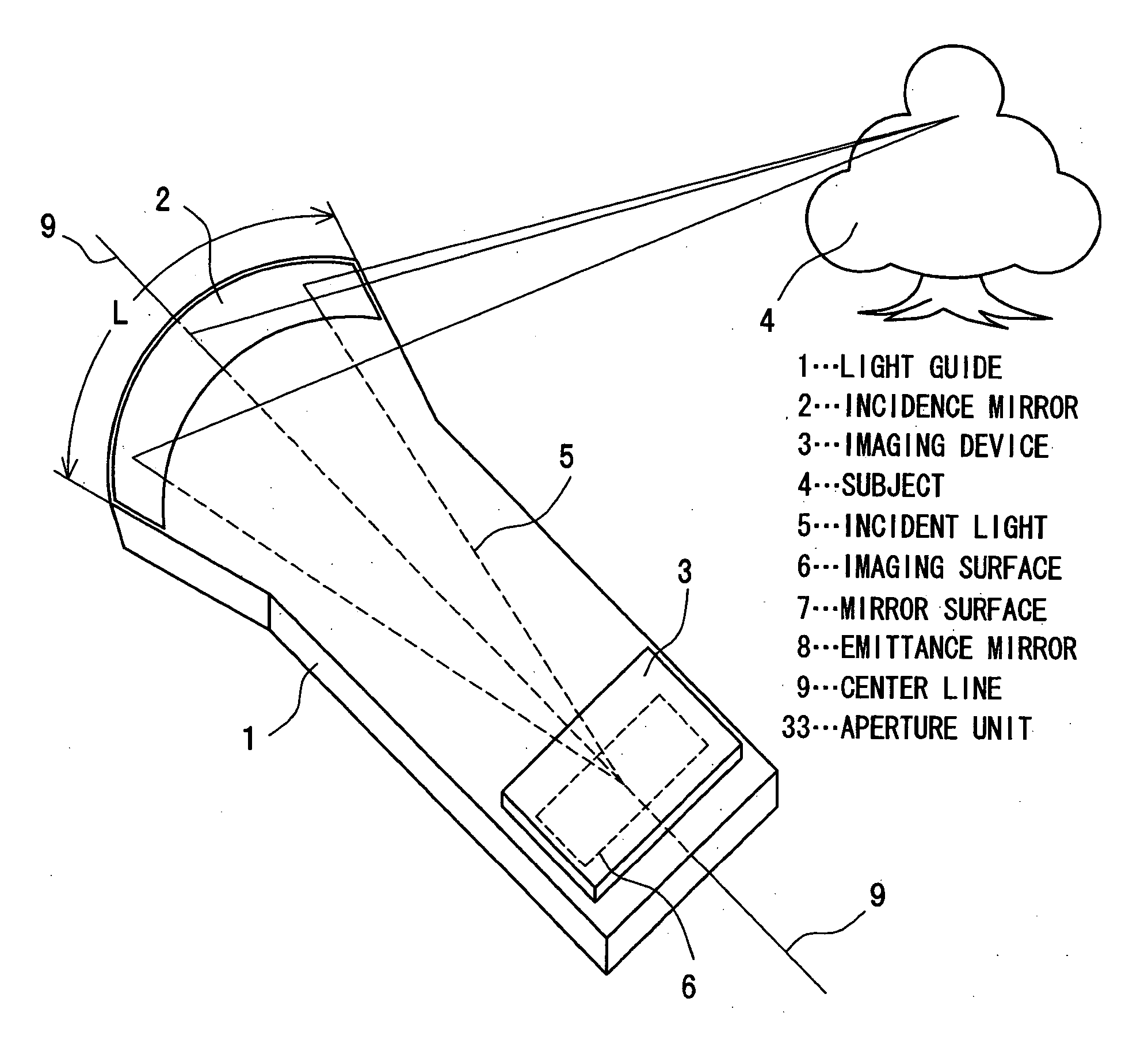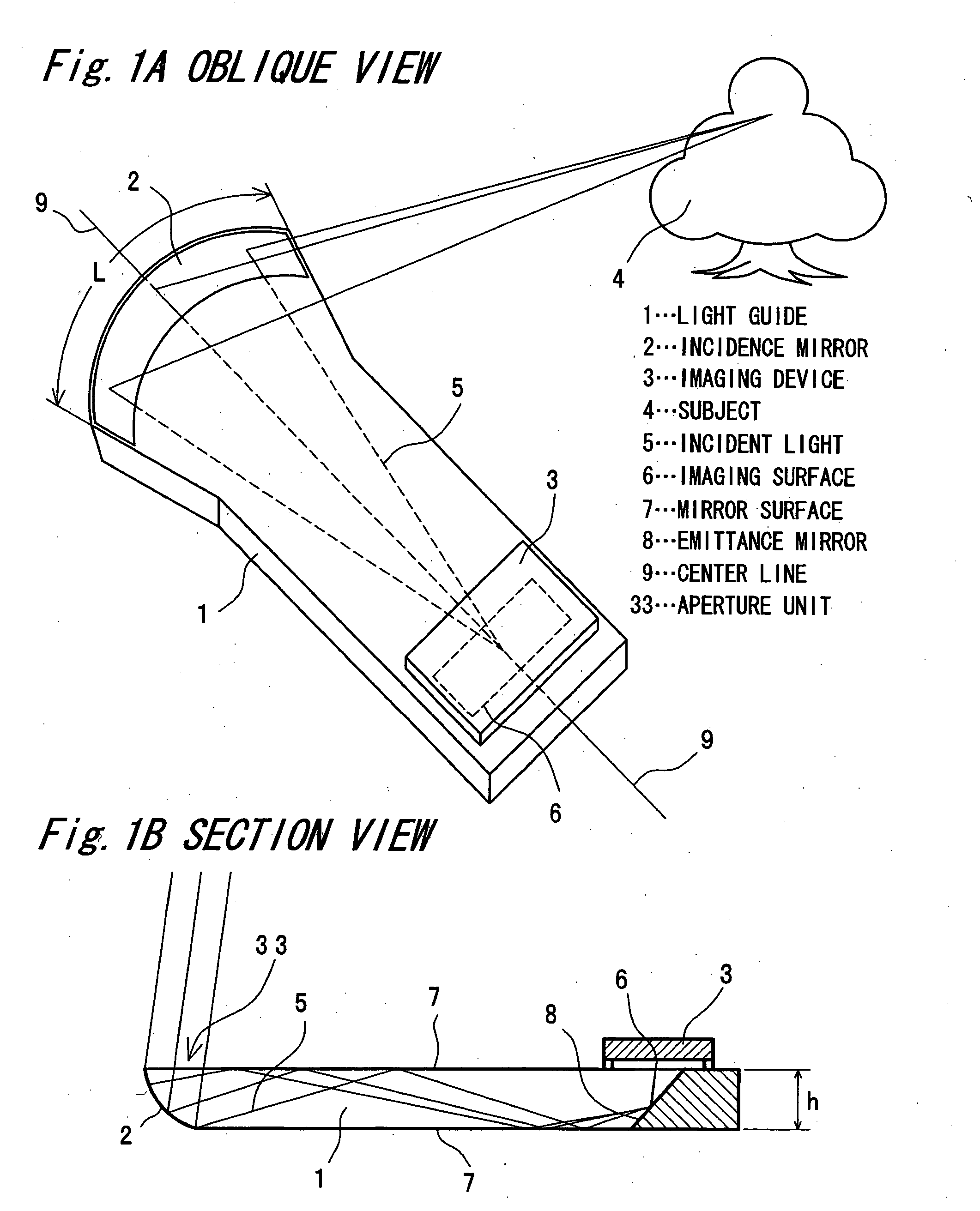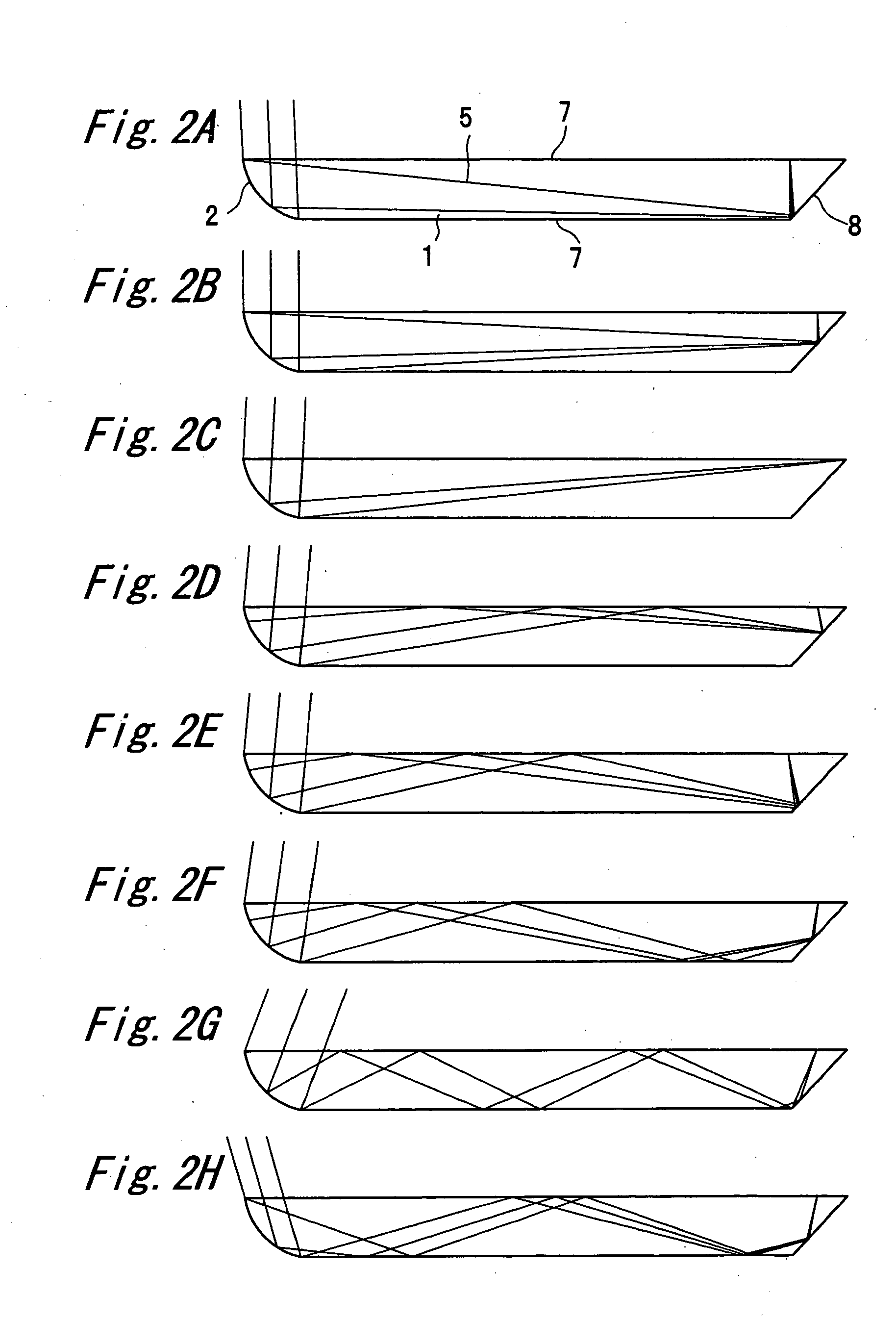Thin imaging apparatus, a thin camera, and an imaging method
a thin camera and imaging apparatus technology, applied in the field of thin camera and imaging apparatus, can solve the problems of reducing yield, increasing process cost, and reducing resolution relative to the size of formed images, and achieve the effect of low profile and high quality image information
- Summary
- Abstract
- Description
- Claims
- Application Information
AI Technical Summary
Benefits of technology
Problems solved by technology
Method used
Image
Examples
embodiment 1
[0048] (Embodiment 1)
[0049] The arrangement of a thin imaging device according to a first embodiment of the present invention is described below with reference to FIGS. 1A and 1B. FIG. 1A is an oblique view of this thin imaging apparatus, and FIG. 1B is a section view through center line 9 in FIG. 1A.
[0050] As shown in FIGS. 1A and 1B this imaging apparatus has a light guide 1, incidence mirror 2, imaging device 3, emittance mirror 8, and aperture unit 33. The incidence mirror 2 is disposed at one end of the light guide 1, and the emittance mirror 8 and imaging device 3 are disposed at the other end of the light guide 1.
[0051] Light from the subject 4 passes through the aperture unit 33 and is incident to the imaging apparatus, reflected by the incidence mirror 2, and thus guided into the light guide 1. The incident light 5 thus guided forms an image on the imaging surface 6 of the imaging device 3, and the subject is thus imaged. The light guide 1 is a path through which the inci...
embodiment 2
[0074] (Embodiment 2)
[0075]FIGS. 5A and 5B show an optical arrangement in front of the imaging device 3 in a thin imaging apparatus according to a second embodiment of the present invention for selecting and separating incident light 5 according to the incidence angle. The arrangement whereby incident light 5 entering the light guide 1 reaches the front of the imaging device 3 is the same as described in the foregoing first embodiment of the invention.
[0076] Referring to FIG. 5A, an optical slit array 20 having slit portions 20a and shield portions 20b is disposed separated a specific distance from the front of the imaging surface 6 of the imaging device 3. Incident light 5a and 5b entering at different incidence angles therefore cast shadows at different positions on the imaging surface 6, and images from different incidence angles can thus be separated.
[0077] Because light obviously does not pass at the portions blocked by the shield portions 20b, the optical slit array 20 can b...
embodiment 3
[0080] (Embodiment 3)
[0081]FIGS. 6A, 6B, and, 6C are section views showing a thin imaging apparatus according to a third embodiment of the present invention. As shown in FIG. 6A, the arrangement whereby light from the subject is reflected and guided by the incidence mirror 2 into the light guide 1 and then reflected by mirror surfaces 7 rendered on both main sides of the light guide 1 is the same as described in the foregoing first embodiment. This embodiment differs from the first embodiment, however, in that the emittance mirror 8 disposed in the first embodiment is not provided in this embodiment, and incident light guided to the end of the light guide 1 of imaging device side is received directly by the imaging device 3. The emittance mirror 8 in the first embodiment reflects the light to a main surface of the light guide 1 and thus makes disposing the imaging device 3 on the surface easier. Disposing the imaging device 3 as shown in FIG. 6A, however, affords both an extremely t...
PUM
 Login to View More
Login to View More Abstract
Description
Claims
Application Information
 Login to View More
Login to View More - R&D
- Intellectual Property
- Life Sciences
- Materials
- Tech Scout
- Unparalleled Data Quality
- Higher Quality Content
- 60% Fewer Hallucinations
Browse by: Latest US Patents, China's latest patents, Technical Efficacy Thesaurus, Application Domain, Technology Topic, Popular Technical Reports.
© 2025 PatSnap. All rights reserved.Legal|Privacy policy|Modern Slavery Act Transparency Statement|Sitemap|About US| Contact US: help@patsnap.com



